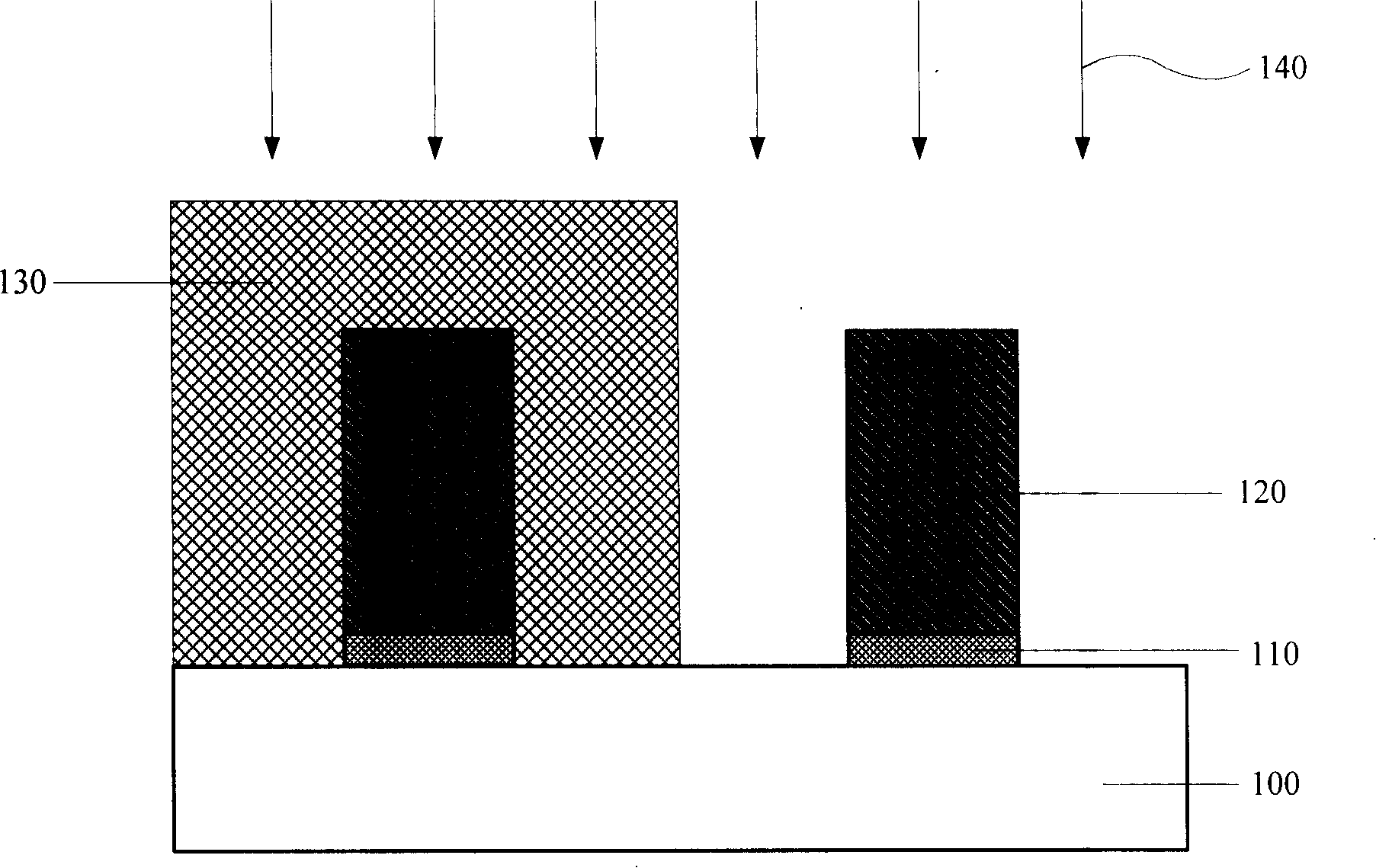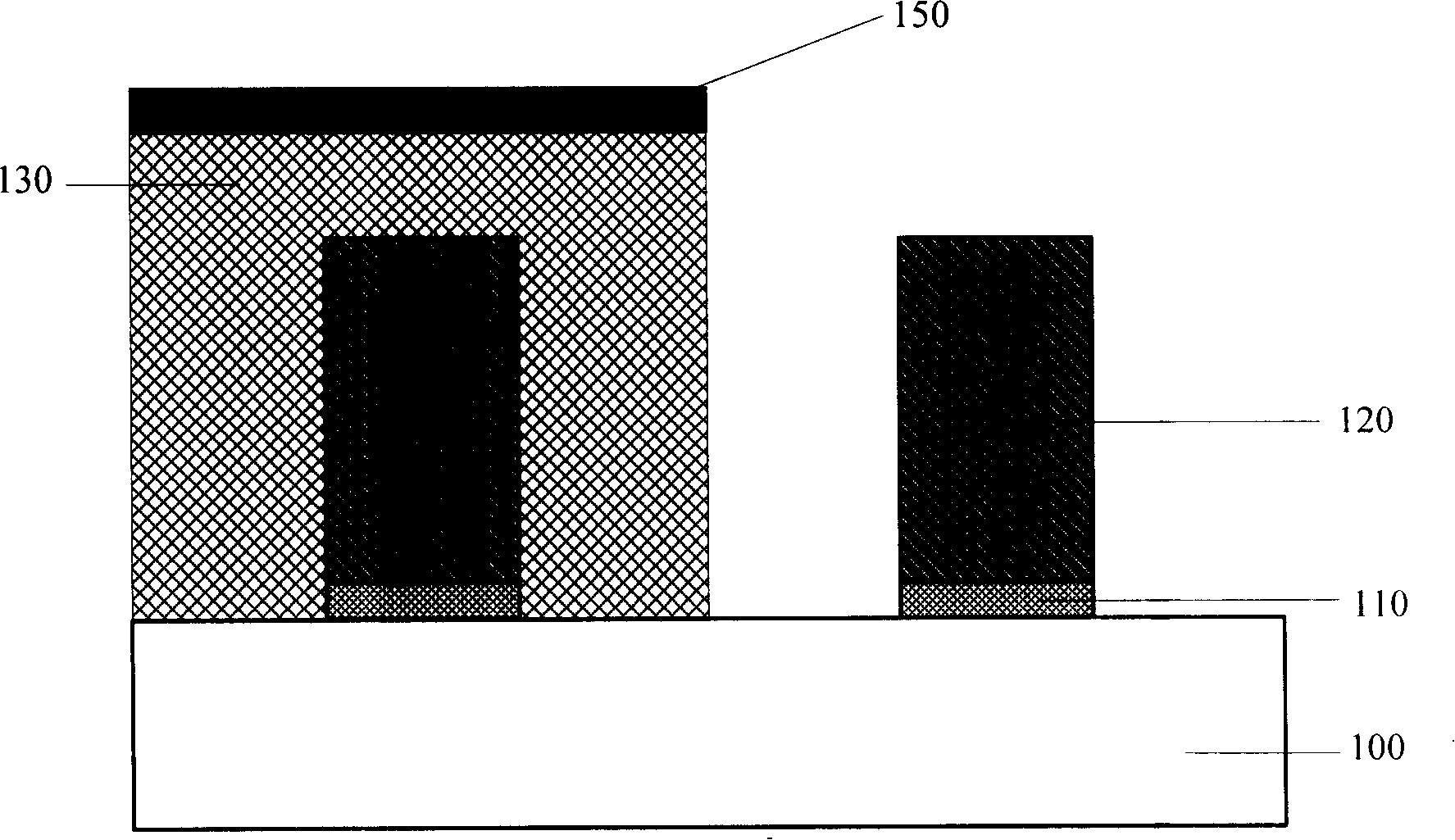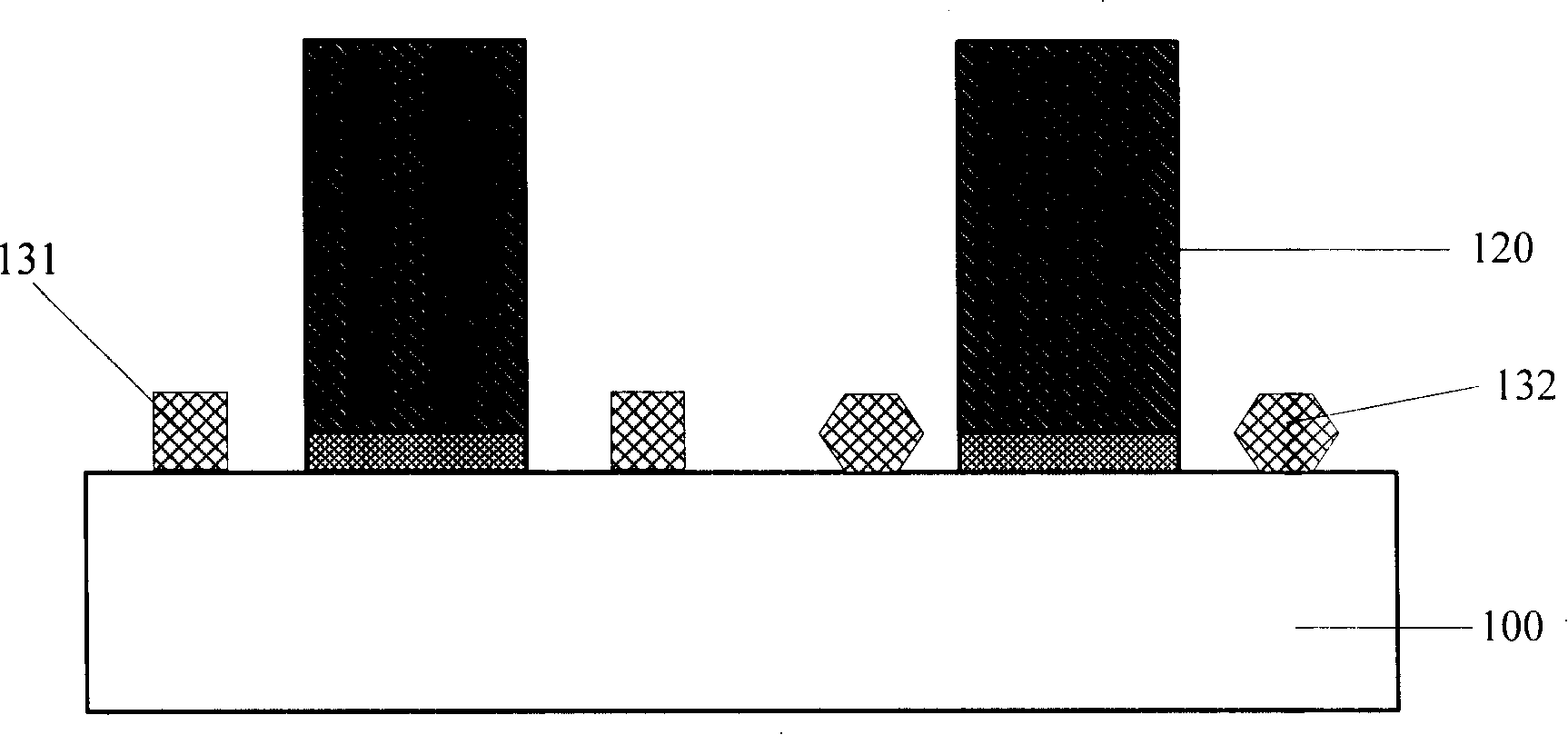Photoresist removeing method
A photoresist and wet removal technology, which is applied in photosensitive material processing, electrical components, semiconductor/solid-state device manufacturing, etc., can solve the problems of improper control of plasma ashing energy, silicon loss, and difficulty in completely removing photoresist and Surface and other problems to ensure performance, avoid serious depressions, and prevent excessive loss of silicon
- Summary
- Abstract
- Description
- Claims
- Application Information
AI Technical Summary
Problems solved by technology
Method used
Image
Examples
Embodiment Construction
[0019] In order to make the above objects, features and advantages of the present invention more comprehensible, specific implementations of the present invention will be described in detail below in conjunction with the accompanying drawings.
[0020] In the following description, numerous specific details are set forth in order to provide a thorough understanding of the present invention. However, the present invention can be implemented in many ways other than those described here, and those skilled in the art can make similar extensions without departing from the connotation of the present invention. Accordingly, the invention is not limited to the specific implementations disclosed below.
[0021] The method of the invention relates to the removal of the photoresist mask after ion implantation using the photoresist as the mask in the manufacturing process of the CMOS device. Figure 6 to Figure 8 To illustrate the device cross-sectional schematic diagram of the photoresi...
PUM
 Login to View More
Login to View More Abstract
Description
Claims
Application Information
 Login to View More
Login to View More - R&D
- Intellectual Property
- Life Sciences
- Materials
- Tech Scout
- Unparalleled Data Quality
- Higher Quality Content
- 60% Fewer Hallucinations
Browse by: Latest US Patents, China's latest patents, Technical Efficacy Thesaurus, Application Domain, Technology Topic, Popular Technical Reports.
© 2025 PatSnap. All rights reserved.Legal|Privacy policy|Modern Slavery Act Transparency Statement|Sitemap|About US| Contact US: help@patsnap.com



